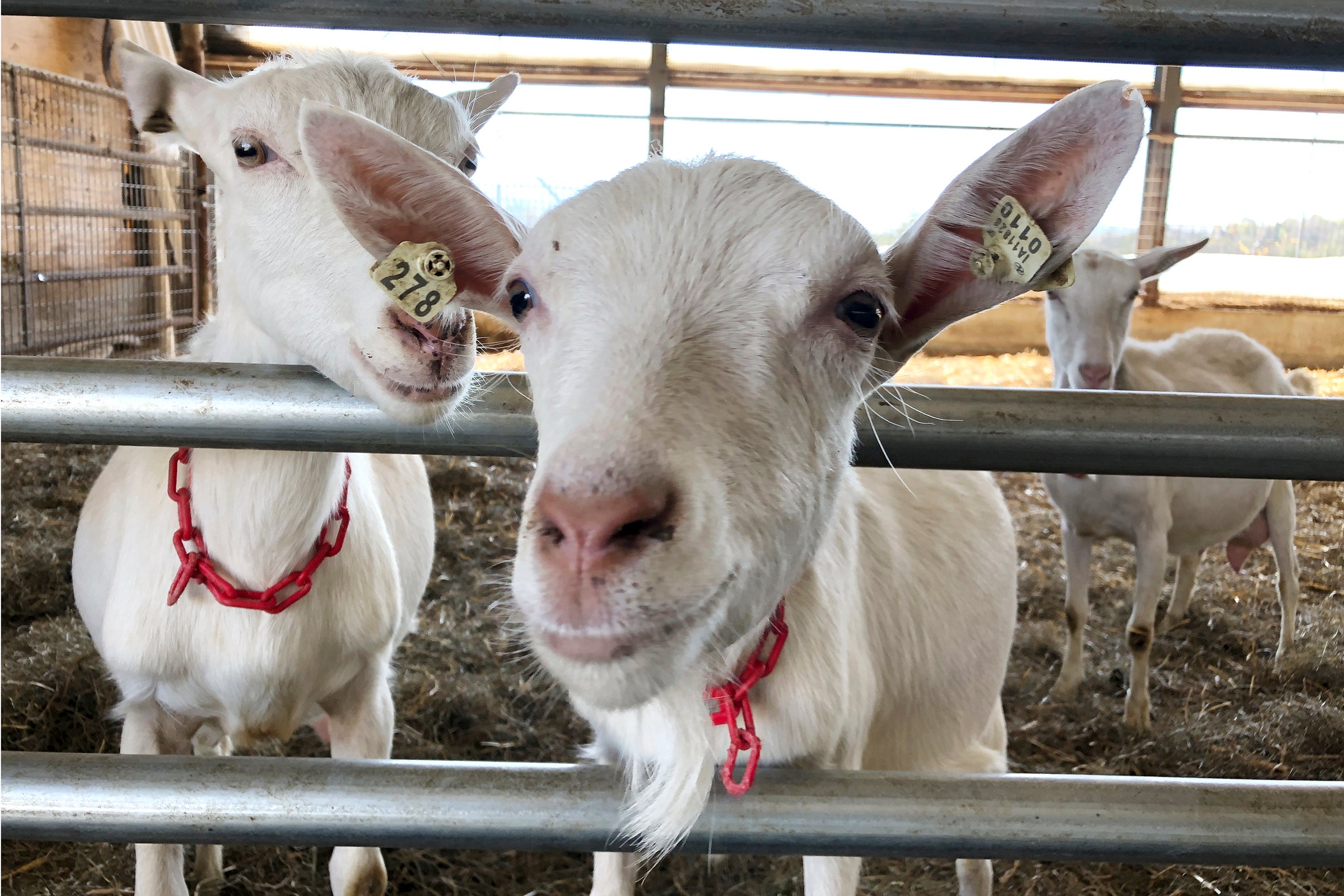Family farm swaps cows for goats amid changed dairy industry
Two brothers operating their family’s dairy farm in Vermont have made the drastic decision to give up hundreds of cows for goats

Your support helps us to tell the story
From reproductive rights to climate change to Big Tech, The Independent is on the ground when the story is developing. Whether it's investigating the financials of Elon Musk's pro-Trump PAC or producing our latest documentary, 'The A Word', which shines a light on the American women fighting for reproductive rights, we know how important it is to parse out the facts from the messaging.
At such a critical moment in US history, we need reporters on the ground. Your donation allows us to keep sending journalists to speak to both sides of the story.
The Independent is trusted by Americans across the entire political spectrum. And unlike many other quality news outlets, we choose not to lock Americans out of our reporting and analysis with paywalls. We believe quality journalism should be available to everyone, paid for by those who can afford it.
Your support makes all the difference.Grappling with a changed industry, two brothers operating their family's dairy farm in Vermont have made the drastic decision to give up hundreds of cows for goats.
The Jones family, which had raised cows for 150 years at Joneslan Farm, houses about 1,000 goats in their barn that remains adorned with painted cut-outs of dairy cattle. Fluctuating milk prices paid to dairy cow farmers and rising costs have driven some small family farms to go big or out of business — or get creative like brothers Brian and Steven.
The Jones brothers finished constructing their nanny-milking parlor and delivered their first goat milk earlier this year to Land O’ Lakes-owned Vermont Creamery, to be used for cheese-making.
They plan to milk 1,200 to 1,500 dairy goats within two years.
“We’re growing all the time,” Brian Jones said.
According to the U.S. Department of Agriculture, the number of dairy cow farms fell by more than half between 2003 and 2020 while the number of cows nationwide grew as farms consolidated.
At the same time, the dairy goat industry in the U.S. has grown significantly in the last 20 years, with the number of dairy goats rising from more than 190,000 in 1997 to 440,000 last year — a 2% increase from 2019, according to the U.S. Department of Agriculture. The latest five-year census of agriculture shows that the number of dairy goat operations has more than doubled from 15,000 in 1997 to more than 35,000 in 2017. The next five-year census comes out in 2022.
“There’s a slow but steady growth,” said Terry Gipson, extension leader at the American Institute for Goat Research at Langston University in Langston, Oklahoma of the national inventory, or number of goats.
One of the big reasons for the growth is America has developed a taste for goat cheese — the soft semi-ripened chevres, he said. Some people also keep small herds of goats for their own milk, as pets and to show.
“Goats are definitely an animal that I think more people are becoming acquainted with and acquainted with their product. It’s becoming more acceptable,” said Thomas Considine, first vice president of the American Dairy Goat Association. “So within the commercial side, more and more people have definitely approved or become accustomed to using the goat cheese, the goat milk, the kefir, even butter and ice creams and yogurts are definitely made.”
California, Wisconsin and Iowa are the top goat dairy states, but the popular and curious ruminants are increasingly turning up in other states. In Maine for example, the number of licensed dairy goat farms has jumped from 10 in 2001 to 54 this year, with five more seeking licenses. Twenty of those have been added in the last 10 years. The Vermont Agency of Agriculture only started keeping track of the number of dairy goat operations in 2019, when there were 42. It’s grown to 46 so far this year.
Iowa now has around 200 licensed dairy goat operations, making up close to 20% of the state’s licensed dairy farms, according to Larry Tranel, a dairy specialist with the Iowa State University extension. Add on to that another suspected 300 unlicensed farms and goat dairies possibly comprise 30% of the dairy producers in the state, he said.
The growth is sustainable as specialty cheese continue to grow, Tranel said.
At the Joneslan Farm, on a dirt road with views of mountains, the goats erupt into baaing and crowd the fences inside the barn to inspect anyone who walks in as they munch on hay. Twice a day, they walk in mass to the parlor to be milked.
The Jones brothers find the goats easier to raise than cows. They have to feed them a lot less, but the goats have a shorter lactation period than cows, milking an average of 250 days a year compared to 305 days for cows, Gipson said.
“The goats have a lot more personality than cows do, that’s for sure. Very curious," Brian Jones said, adding that they always want to nibble on something.
The brothers are enjoying their steady milk check.
“You at least have an idea of what you can plan on. No big surprises,” Brian Jones said.